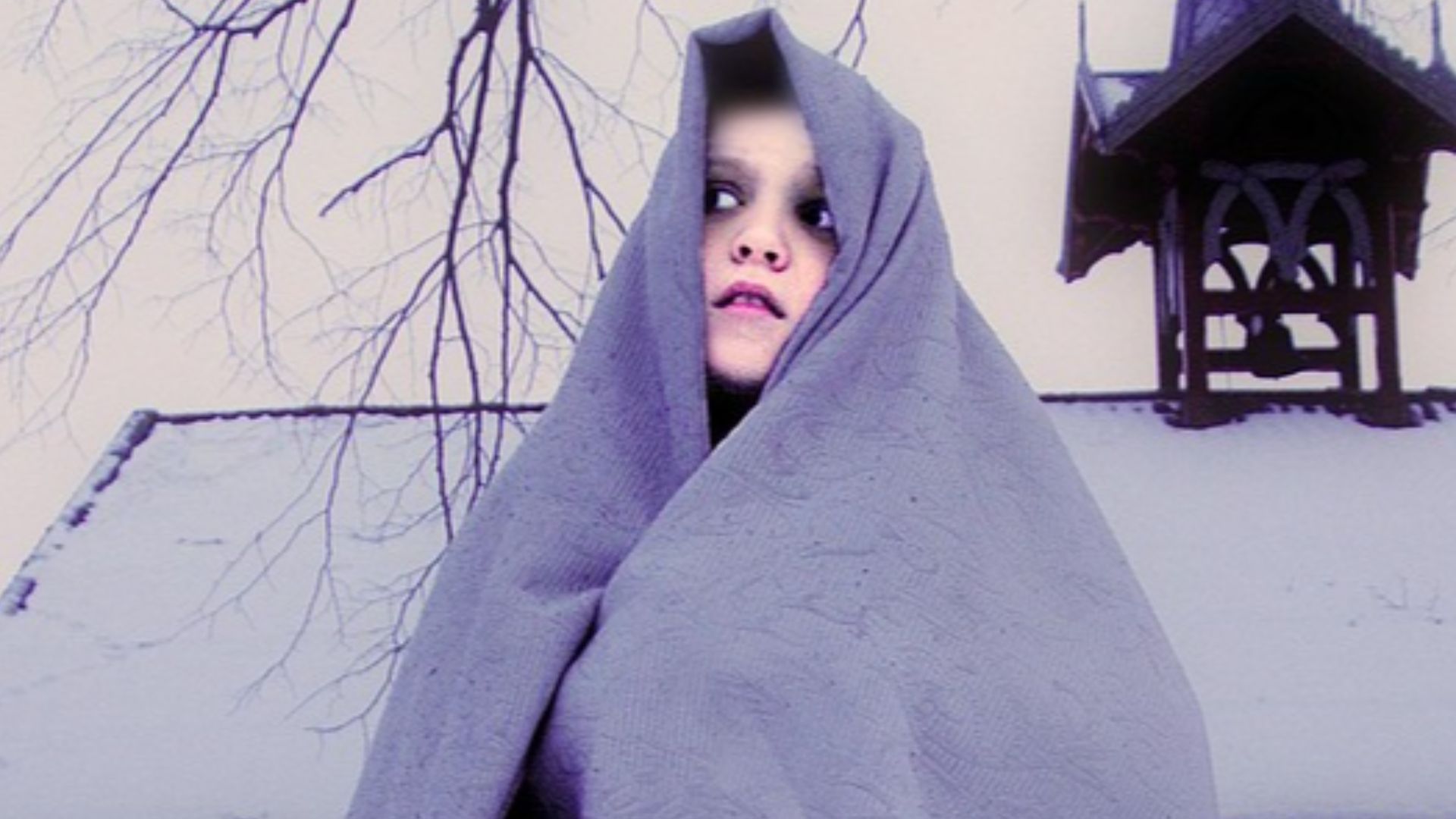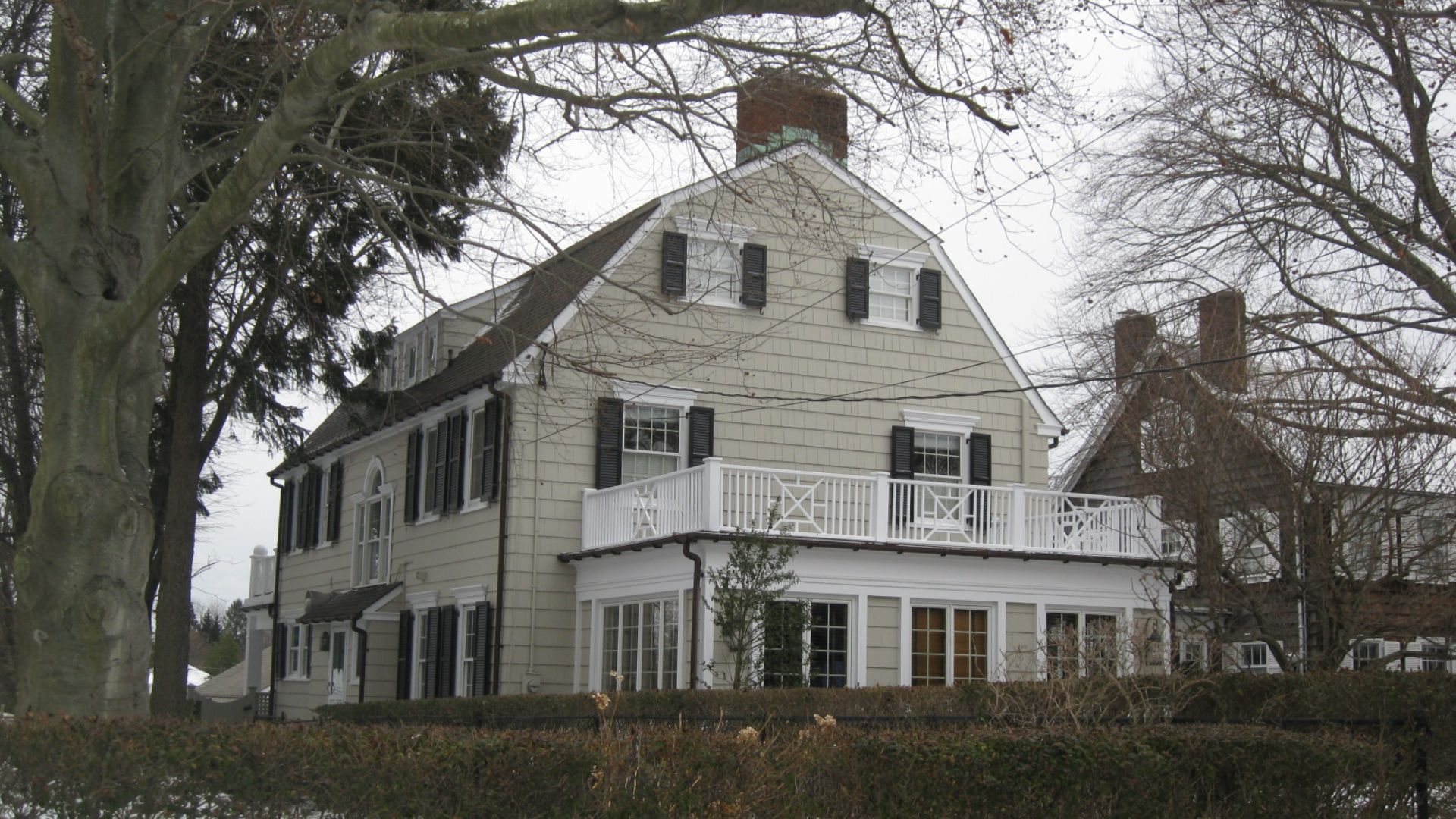It began as an ordinary house in a quiet Long Island neighborhood. However, in 1974, the quiet suburb’s peace was broken when Ronald DeFeo Jr. was charged with the deaths of his family members. A year later, George and Kathy Lutz moved into the same home, unaware they were about to become part of one of America’s most chilling stories.
Within weeks, George and Kathy began crafting a story that would soon grip the nation. They claimed the house pulsed with evil forces that slammed doors on their own, whispered menacing voices in the dark, and filled rooms with a sickening, inexplicable stench. They fled after only twenty-eight days, and their tale ignited a firestorm of media attention. Books, talk shows, and films followed, turning the house into a pop-culture phenomenon.
Among the many eerie claims, one detail stood apart—a photograph of a small boy with glowing eyes captured during a paranormal investigation. For decades, that single image was held up as proof that something unholy lingered within those walls. And here is how a simple picture fooled even the experts for years.
The Photo That Wouldn’t Die
In 1976, famed ghost hunters Ed and Lorraine Warren brought a team to investigate the Amityville house. Using infrared cameras, they scoured the rooms, hoping to capture visible evidence of the supernatural. Later, while reviewing hundreds of frames, one photo appeared to reveal exactly that—a young boy peeking from a bedroom doorway, eyes shining with an otherworldly white glare.
Television specials, magazines, and documentaries showcased the image as “undeniable evidence.” It was shared at paranormal conventions and became a centerpiece of ghost lore. How could such a vivid image emerge in darkness, decades before digital manipulation? The mystery deepened with every retelling, and the “Amityville ghost boy” became a star in his own right.
Yet time has a way of softening fear. As the years passed, researchers began digging deeper, questioning details long ignored. The boy’s hair seemed lighter than any of the DeFeo sons. His shirt looked too modern for the 1970s crime scene. Bit by bit, the photograph’s haunting spell began to weaken, and cracks formed in the legend.
The Ordinary Truth
The truth was far simpler and far less supernatural. The so-called ghost wasn’t a murdered child at all. During the overnight investigation, while the automatic infrared camera took timed exposures every minute or so, investigator Paul Bartz walked past a bedroom doorway on the second floor. At that exact moment, the shutter fired, capturing him mid-stride. The strong reflection off his glasses created the “glowing eyes,” and slight motion blur—combined with heavy cropping—made him appear childlike and demonic.
In the end, that is the true lesson of Amityville. The scariest stories aren’t the ones hiding in the dark, as they’re the ones we create, nurture, and keep alive long after the truth has been revealed.
KEEP ON READING

The 10 Youngest Monarchs In History & The 10 Oldest
Age Is Just A Number. Imagine being crowned king or…
By Chase Wexler Mar 11, 2025
Written By The Victors: 20 Names History Books Tried To…
History’s Forgotten Figures. It is said that history is written…
By Farva Ivkovic Jun 23, 2025
Writing On The Wall: 20 Fascinating Hieroglyphics Throughout History
A Language Carved To Last. Hieroglyphics are unique, ancient writings.…
By Chase Wexler May 29, 2025
Women At War: 20 Fierce, Fearless, & Famous Female Fighters
How Many Of These Women Warriors Do You Know?. History…
By Emilie Richardson-Dupuis Aug 14, 2025
The Woman Without A Name
Mary Doefour was the woman without a name. In 1978,…
By Robbie Woods Dec 3, 2024
The Woman With Toxic Blood
One night in 1994, Gloria Ramirez reported to the ER.…
By Robbie Woods Jan 6, 2025


